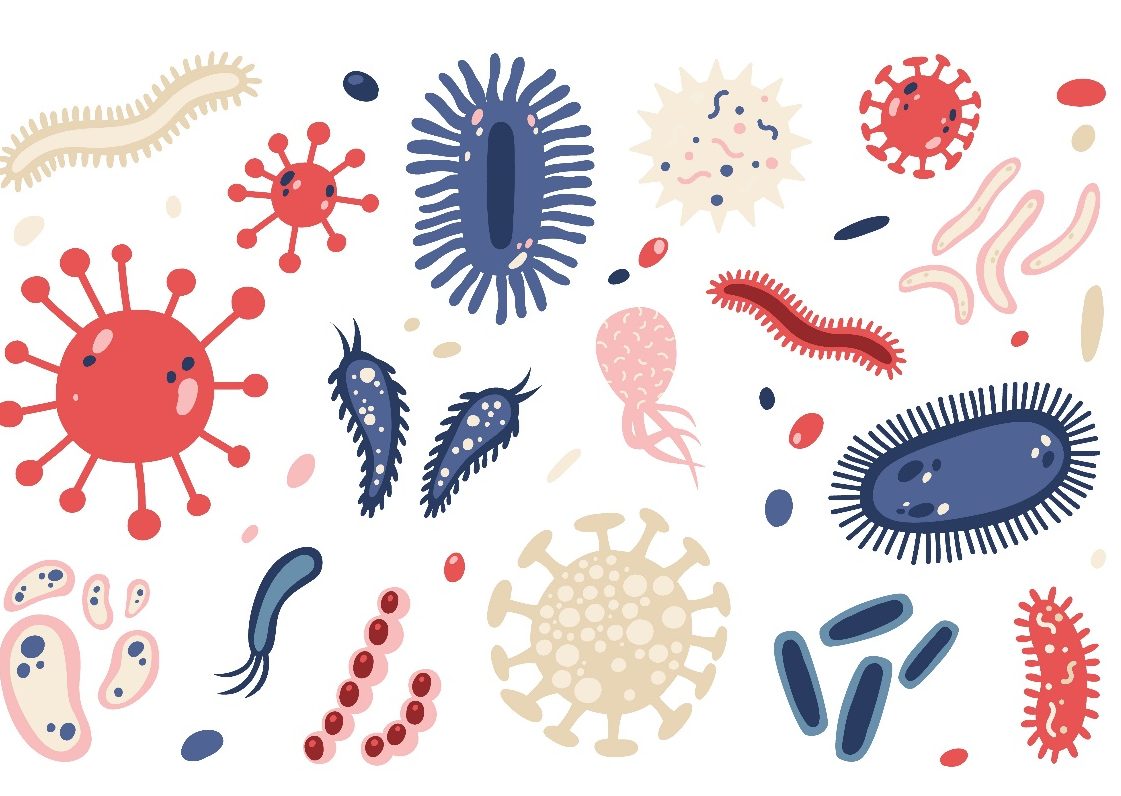[ad_1]
The human microbiome is one of the most fascinating and important subjects of scientific research today. Neat freaks, stop reading now.
The microbiome is made up of trillions of microbes, living organisms like bacteria and fungi, which coexist in and on our bodies. Many people cringe at the thought of being covered head-to-toe in bacteria, but these good bacteria actually play a very important role in our overall health. Your microbiome supports your metabolism, digestion, and immune system, among many others.
The Human Microbiome Project, led by Jack Gilbert and the National Institutes of Health (NIH), was launched in 2007 with the goal of completely decoding the human microbiome and what its role is in our health. This project lasted 8 years, utilized $194 million funded by the NIH, and involved more than 200 scientists from 80 institutions. One of the most important findings to come out of their research was that each person studied had a distinct and unique makeup of microbes.
“There is not a single “normal” or core microbiome; everyone has a personalized microbiome. Nevertheless, different bacterial species may be doing similar jobs in different people. For example, the metabolic processes required to digest complex carbohydrates in the gut may be performed by different bacteria in different individuals.”
The study also found that your microbiome acts like a fingerprint in the way that it can be traced to follow your movements. Wherever you go, you are leaving traces of your microbiome in your wake, and it even takes over your surrounding area.
The project followed seven different families, studying their homes and hotel rooms that they were placed in, to see how their unique microbiomes interacted. Not surprisingly, it was found that people who live in the same home often share similar microbe inhabitants. They also take their microbiomes with them when they come and go.
“When families moved, their microbiological ‘aura’ followed. If one person left the home even for a few days, their contribution to the microbiome diminished. These findings have implications not only for household identity and composition, but also for indicators of the members’ health and well-being.”
This phenomenon does not only occur in the home, but the hotel rooms that the families stayed in as well. Within a few hours, the microbiomes of the previous guests were eradicated and replaced completely by the new family.
In the years since the Human Microbiome Project concluded, microbiome sequencing has become the latest tool for forensic scientists studying crime scenes. This new technique could be extremely useful in the future, however there are still drawbacks.
“Profiling the microbiome may be useful in identifying a person or their lifestyle characteristics, but for burglary, the microbiome of the perpetrator would need to be detected at the crime scene, in their absence, while retaining the identifiable characteristics.”
With our current knowledge and technology, the human microbiome can only be used to help narrow searches once a subject has been identified through DNA profiling.
The great majority of bacteria that you interact with on a daily basis have no tangible effect on your health, but there are certain forms of bacteria that can benefit our development.

For example, this gut bacteria called Clostridia was found to protect mice from peanut allergies.
“By inducing immune responses that prevent food allergens from entering the bloodstream, Clostridia minimize allergen exposure and prevent sensitization — a key step in the development of food allergies. The discovery points toward probiotic therapies for this so-far untreatable condition, report scientists from the University of Chicago, Aug 25 in the Proceedings of the National Academy of Sciences.”
According to the University of Chicago, it is possible that exposing children to a greater microbiome diversity will help protect them from allergies and other health issues. They believe that food allergies have become more prevalent due to modern practices of hygiene and cleanliness that disrupt the body’s natural bacterial composition. One major part of this problem is the common use of antibiotics. Having a diverse microbial ecosystem is just like having a diverse financial portfolio: it will help protect you from losses during bad times. Diverse ecosystems are more resilient to obesity, immune problems, and many other issues.
If you are somebody who has been on a course of antibiotics or eating an unhealthy diet, don’t worry, you can replenish the good bacteria in your microbiome in no time at all. One of the best things you can do for your gut is eat a healthy diet containing complex carbs and eat plenty of foods that contain prebiotics. Prebiotics are non-digestible fibers that come from numerous grains, roots, fruits, and vegetables. Some good examples of where to start are artichokes, asparagus, bananas, carrots, and radishes.
Remember that your microbiome is also shared with your family and loved ones, so make sure that you are promoting bacterial diversity for good gut health!
Guest post by Stuart Ridge, CMO, VitaMedica
The post The Human Microbiome appeared first on The Good Gut.
[ad_2]
Source link
